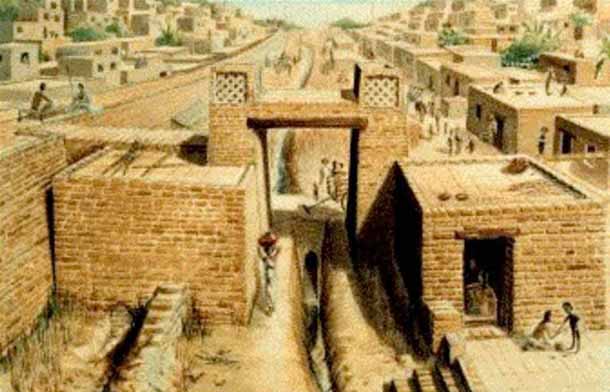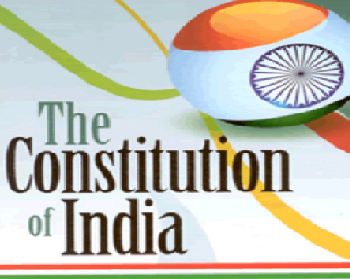: It affirms the ability of the Parliament to amend any a part of the Constitution as well as elementary Rights.
The Constitution (31st Amendment) Act, 1973: Increases the elective strength of the Lok Sabha from 525 to 545. beneath the Act, the higher limit of representatives of the States goes up from five hundred to 525 which of the Union Territories decreases from twenty five to twenty.
The Constitution (36th Amendment) Act, 1975: By this Act, geographic region became the twenty second State of the Indian Union. The Bill received the Presidential assent on might sixteen, 1975 however the Act came into force from Apr twenty five. 1975, the day on that it had been gone the Rajya Sabha.
(The Bill, before being given the Presidential assent, was corrected by the Legislative Assemblies of thirteen States. beneath the Constitution, the change is needed to be corrected by the Legislatures of not but half the States).
The Constitution (37th Amendment) Act, 1975: Was gone the parliament on Apr twenty six, one975 to produce for a assembly and 1 Council of Ministers to Arunachal Pradesh, the country's north-eastern most nation Territory. (Arunachal Pradesh Assernbh office inaugurated on Assumption of Mary, 1975)
Pr Constitution (38th Amendment) Act, 1975: It received essential assent on August 1, 1975. The Act makes the declaration of emergency non-judicial.
Constitution (39th Amendment) Act, 1975: The Bill was passed 1979 on August seven and received Presidential assent on August The Act places on the far side challenge in courts the election to
Parliament of someone holding the workplace of Prime Minister or Speaker and therefore the election of President and Vice-President.
The Constitution (40th Amendment) Act, 1976: This change has three-fold objectives : one. It places on the far side challenge in courts some major Central laws; two. It offers similar protection to many State enactments, principally about land legislation, by as well as them within the Ninth Schedule of the Constitution and three. It provides that the bounds of the water and therefore the maritime zones of Asian country shall be specified from time to time by laws created by Parliament.
The Constitution (43rd Amendment) Act, 1978: It received the Presidential assent on Apr thirteen, 1978. This Act repealed a number of the provisions of the Constitution (42nd Amendment) Act passed throughout the Emergency. It repaired civil liberties by deleting Article 3ID that gave powers to Parliament to curtail organization activity.
This Act, that was corrected by quite half the States, additionally repaired legislative powers to the States to form applicable provision for anti-national activities in keeping with the basic Rights.
Under the Act, the judiciary was additionally repaired to its rightful place. The Supreme Court was given the ability to invalidate State laws, an influence withdrawn by the forty second change Act. The High Courts may additionally investigate the question of constitutional validity of Central laws thereby enabling persons living in foreign places to get Speedy Justice while not having to return to the Supreme Court.
The Constitution (45th Amendment) Act, 1980: Passed by the Parliament in Jan 1980 seeks to increase reservation of seats for regular Castes and regular Tribes and therefore the illustration of the Anglo- Indians within the Lok Sabha and therefore the State Assemblies for ten years, i.e., upto Jan twenty five, 1990.
The Constitution (46th Amendment) Act, 1982: Passed in July 1982, allows the State Governments to plug loopholes and realise nuisance tax dufes and additionally to achieve some uniformity in iax rates just in case of bound things.
The Constitution (49th Amendment) Act, 1984: The change of 1984 has enabled the provisions of the Sixth Schedule to the Constitution to be created applicable to the social group areas of the State of Tripura. This change is meant to allow a constitutional security to the autonomous District Council functioning within the State.
The Constitution (52nd Amendment) Act, 1985: The act has made defection to a different party, when elections bootleg. Any member defecting to a different party when elections are disqualified from being member of Parliament or State legislative assembly.
The Constitution (53rd Amendment) Act, 1986: It confers Statehood on Mizoram and ensures against spare interference by the Central Government by the laws relative to spheres of social relationship and community conduct applicable to Mizoram.
The Constitution (54th Amendment) Act, 1986: It enhances the salaries of Judges of High Courts and Supreme Court of Asian country. The wage of judge of Supreme Court of Asian country are Rs. 10,000; judge of High Courts Rs. 9,000/-. Judges of Supreme Court Rs. 9,000/- and Judges of High Courts Rs. 8,000
The Constitution (55th Amendment) Act, 1987: It grants Statehood to Arunachal Pradesh that consequently became the twenty fourth State of the Indian Union.
The Constitution (56th Amendment) Act, 1987: It confers Statehood on state and forms a brand new Union Territory of Daman and Diu. state therefore became the twenty fifth State of the Indian Republic.
The Constitution (57th Amendment) Act, 1987: It created a special provision for the fixing of the new State of state. Consequently Daman and Diu were separated from the previous to create a Union Territory.
The Constitution (58th Amendment) Act, 1988: It provides for special arrangements with relevancy reservation of seats for regular Tribes within the State of Arunachal Pradesh, Nagaland, Mizoram and Meghalaya. By amending Article 322 the adjustment of seats has been frozen till 2000 A.D.
The Constitution (59th Amendment) Act, 1988: It sceptered the Central Government to impose Emergency in Punjab once deemed necessary. beneath the change, President's rule will be extended upto 3 years. Earlier most amount was 2 years.
The Constitution (61st Amendment) Act, 1989: It down the age from twenty one to eighteen.
The Constitution (62nd Amendment) Act, 1989: It provided for the extension by another ten years of reservation of seats within the Parliament and State Assemblies for the regular Castes and Tribes and reservation for Anglo Indian Community by nomination.
The Constitution (63rd Amendment) Act, 1989: It repealed change fifty nine that sceptered the govt to impose emergency in Punjab.
The Constitution (64th Amendment) Act, 1990: It extended the President's rule Punjab by six months.
The Constitution (66th Amendment) Act, 1990: To bring land reforms at intervals the reach of ninth Schedule of the Constitution.
The Constitution (69th Amendment) Act, 1991: Delhi created metropolis Region. The Act additionally created provision for assembly and a council of ministers for metropolis.
The Constitution (70th Amendment) Act, 1992: Before this act was created Article fifty four about the election of the President provided for associate body consisting solely of the elective members of Parliament also because the legislative assemblies of the States (not of Union Territories).
The change offer for inclusion of members of legislative assembly of Pondicherry and metropolis.
The Constitution (71st Amendment) Act, 1992: The act amends the eighth Schedule to the Constitution to incorporate Konkani, Manipuri and Nepali Languages within the eighth Schedule of the Constitution.
The Constitution (72nd Amendment) Act, 1992: Article 332 amended to work out the quantity of reserved seats for STs within the State Assembly of Tripura, till readjustment of seats created on the premise of census 2000.
The Constitution (73rd Amendment) Act, 1993: Part IX about Panchayats inserted within the constitution to produce Gram Sabha, constitution of panchayats at village and different levels, direct elections to any or all seats, fixing the tenures, reservation for SC, ST and thirty third seats for girls etc.
The Constitution (74th Amendment) Act, 1993: A new half IX- A about Municipalities, i.e., Nagar Panchayats, Municipal Councils and Municipal firms.
The Constitution (75th Amendment) Act, 1994: Article 332 (Part XIV-A) amended to allow timely relief to the rent litigants by setting-up State-level Rent Tribunals to cut back the tiers of appeals, and to exclude jurisdiction of all courts except Supreme Court beneath Act 136.
The Constitution (76th Amendment) Act, 1994: This Act aims at the reservation of seats in instructional establishments and reservation of appointments or posts publically services for Backward categories, SCs and STs. The Supreme Court, on sixteenth Nov., 1992 dominated that the whole reservation beneath Article 16(4) shouldn't exceed five hundredth.
The Constitution (77th Amendment) Act, 1995: Article 16(4A) provides reservation in promotion for the SC and therefore the ST.
The Constitution (78th Amendment) Act, 1995: The amendments to Acts placed within the ninth Schedule square measure insusceptible from legal challenge, through variety of amending Acts beside some principal Acts so its implementation becomes sleek.
The Constitution (79th Amendment) Act, 1999: Extended the reservations for SC/ST in services as additionally nomination of two Anglo-Indians to Lok Sabha up to 2010.
The Constitution (80th Amendment) Act, 2000: Related to the distribution between the Centre and therefore the States whereby States overall share was accumulated to twenty sixth as per the Tenth Finance Commission's recommendations.
The Constitution (81st Amendment) Act, 2000: Related to carrying forward backlog vacancies of regular Castes and regular Tribes.
The Constitution (82nd Amendment) Act, 2000: Related to relaxation in qualifying marks and reservation of posts in super speciality courses in Medical and Engineering disciplines, etc. for regular Castes/ Tribes etc. (Both 81st & 82nd amendments were created in replacing of Supreme Court's judgements).
The Constitution (83rd Amendment) Act, 2000: Related to the reservation of seats beneath Panchayati rule in Arunachal Pradesh.
The Constitution (84th Amendment) Act, 2000: Related to making of recent States of Jharkhand, Chhatisgarh and Uttaranchal.
The Constitution (85th Amendment) Act, 2001: Amended Article 16(4A) to produce for of import seniority in promotion by virtue of rule of reservation for the. Government servants happiness to the regular Castes and therefore the regular Tribes.
The Constitution (86th Amendment) Act, 2002: Provides for (i) insertion of a brand new article 21A that the State shall offer free and obligatory education to any or all kids of the age of six to 14 years in such manner because the state might, by law, determine.
The Constitution (87th Amendment) Act, 2003: This Article provides that in Article eighty one of the Constitution, in clause (3), within the provision, in clause (ii), for the figures "1991", the figures "2001" shall be substituted.
The Constitution (88th Amendment) Act, 2003: This Article provides for the insertion of a brand new article 268A that states that taxes on services shall be levied by the govt of {india|India|Republic of Asian country|Bharat|Asian country|Asian nation} and such tax shall be collected and condemned by the govt of India and therefore the States within the manner provided in clause (2).
The Constitution (89th Amendment) Act, 2003: This Article provides for the change of Article 338 and insertion of a brand new article 338A that provides that there shall be a National Commission for ST.
The Constitution (90 Amendments) Act, 2003: This change given that for elections to the assembly of the State of Assam, the illustration of the regular Tribes and non-Scheduled Tribes within the constituencies enclosed within the Bodoland Territorial Areas District, therefore notified, and existing before the constitution of the Bodoland Territorial Areas District, shall be maintained.
The Constitution (91st Amendment) Act, 2003: This Article provides that the whole variety of Ministers, as well as the Prime Minister, within the Council of Ministers shall not exceed fifteen per cent of the whole variety members of the House of the individuals.
The Constitution (92nd Amendment) Act, 2003: This Article provides for the inclusion of 4 new language, viz. Bodo, Dogri, Maithili and Santhali within the Eighth Schedule of the Constitution.
The Constitution (93rd Amendment) Act, 2005: In this change, a provision has been inserted that the State (i.e. Parliament or different legislatures) will create laws for the advancement of the SC, ST or the OBCs of voters in matters of admission to instructional establishments, as well as personal unaided establishments.
The Constitution (94th Amendment) Act, 2006: This article provides that in article 164 of the Constitution, in clause (1), within the provision, for the word "Bihar", the words "Chhattisgarh, Jharkhand" shall be substituted.
The Constitution (95th Amendment) Act, 25 January 2010: To extend the reservation of seats for SCs and STs in the Lok Sabha and states assemblies from Sixty years to Seventy years
The Constitution (96th Amendment) Act, 23 September 2011: Substituted "Odia" for "Oriya"
The Constitution (97th Amendment) Act, 12 January 2012: Added the words "or co-operative societies" after the word "or unions" in Article 19(l)(c) and insertion of article 43B i.e., Promotion of Co-operative Societies and added Part-IXB i.e., The Co-operative Societies.
The amendment objective is to encourage economic activities of cooperatives which in turn help progress of rural India. It is expected to not only ensure autonomous and democratic functioning of cooperatives, but also the accountability of the management to the members and other stakeholders.
The Constitution (98th Amendment) Act, 2 January 2013: To empower the Governor of Karnataka to take steps to develop the Hyderabad-Karnataka Region.







